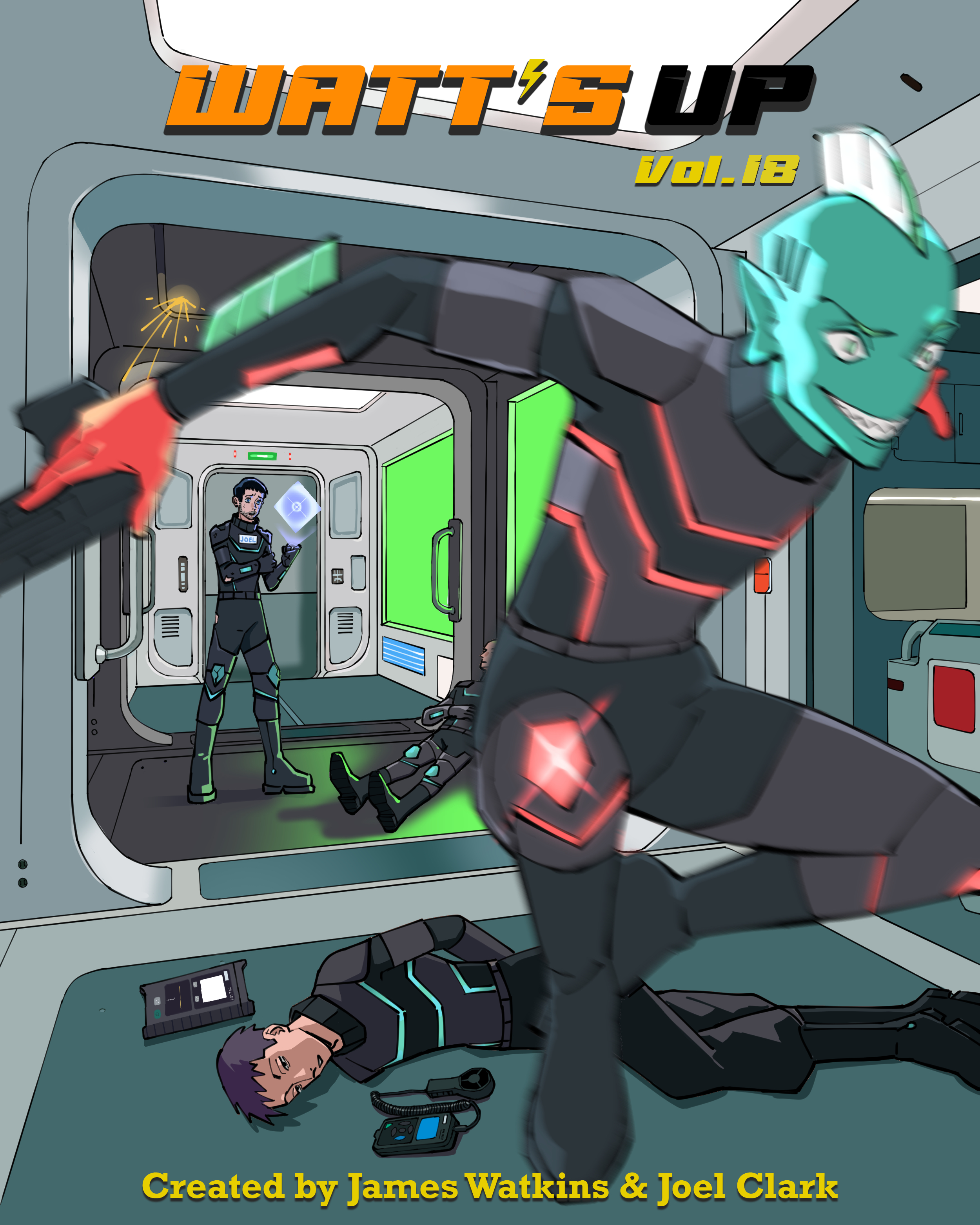
1st volume of 2025! Product recalls to watch out for 😥, an introductory guide to three-phase electricity, and a fun quiz to test your electrical knowledge. Wishing you a bright and successful start to the new year!🎉

Here are 6 commonly used electrical acronyms, can you guess what they stand for?
- AC
- LED
- IP
- VFD
- CTVT

Three-phase electrical systems are now becoming more popular in the domestic sector due to modern energy needs and advancements in the modern home.
What is Three-Phase Electricity
Three-phase electricity is a type of alternating current (AC) power supply that delivers energy through three separate phases (cables), each carrying an alternating voltage offset by 120 degrees.
It is generated by rotating a magnetic field within an alternator, which induces alternating current in three separate coils (stator windings) spaced 120 degrees apart.
As the rotor spins, it creates a continuous magnetic field, causing each of the three coils to produce an AC current with a 120-degree phase difference. This offset ensures the power generated is balanced, providing a steady and continuous energy supply.
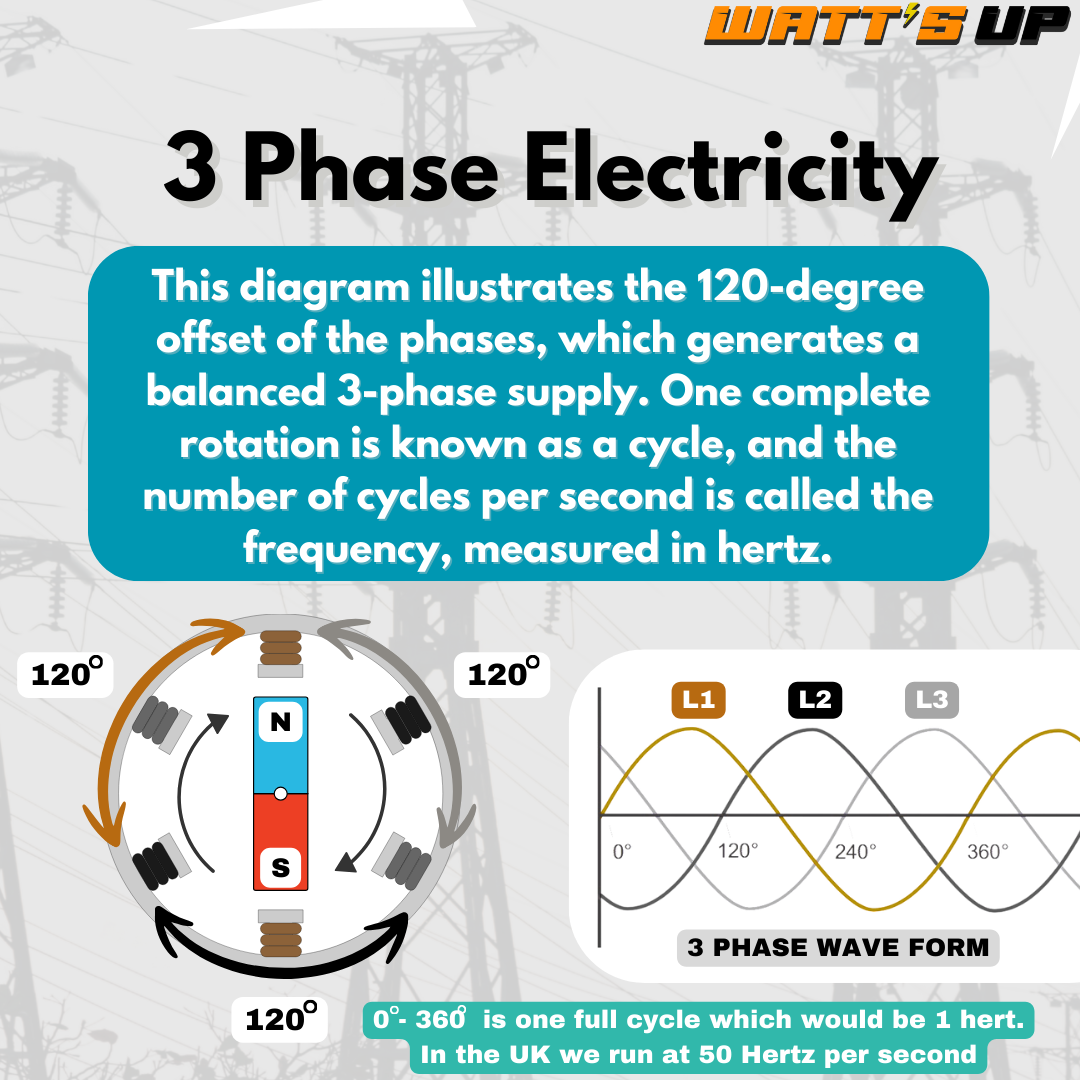
Three-Phase Configuration United Kingdom
In the UK the three-phase systems typically operate at: 400V (line-to-line voltage) - between any two phases 230V (line-to-neutral voltage) - between a phase conductor and the neutral conductor.
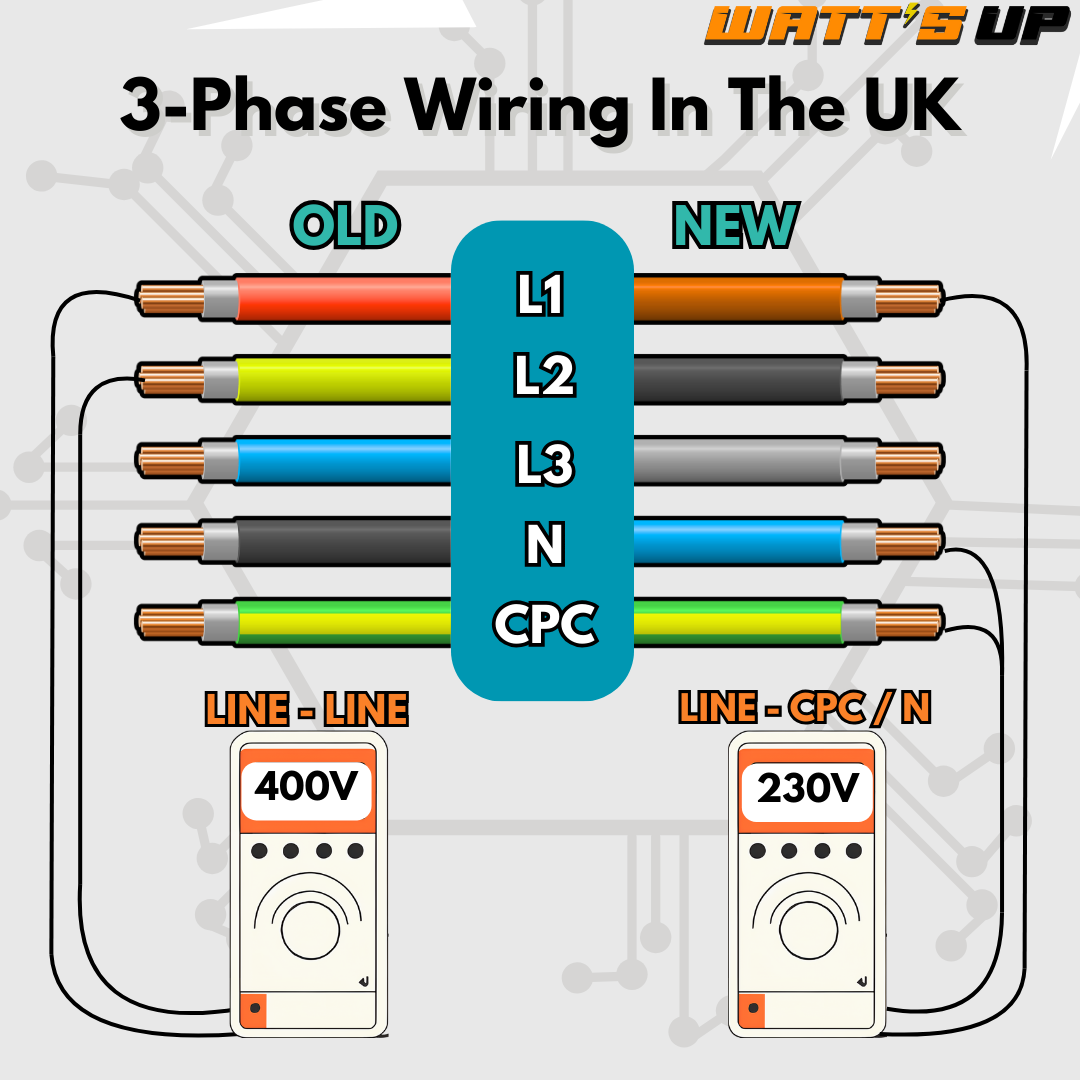
FAQ's
Q. Why is three-phase power more efficient?
A. Three-phase power is more efficient because:
- It delivers continuous power, unlike the fluctuating peaks of single-phase.
- It uses smaller and lighter equipment (motors, transformers) for the same power output.
- It reduces energy losses during transmission.
Q. Do homes in the UK use three-phase power?
A. Historically most UK homes have used single-phase power because it meets the typical power needs of domestic appliances. Currently, three-phase power is becoming more common in homes with higher energy demands.
Q. What is an unbalanced load in a three-phase system?
A. An unbalanced load in a three-phase system occurs when the power drawn by each phase is not equal. This can happen if the electrical loads connected to the three phases vary significantly, such as one phase powering a large motor while the others power smaller devices.
Effects of an Unbalanced Load:
Increased Neutral Current: Excess current flows through the neutral cable to balance the system.
Voltage Imbalance: Unequal phase voltages can affect equipment performance and efficiency.
Overheating: Transformers, generators, or motors may overheat due to uneven loading.
Proper load distribution is essential to avoid inefficiencies, equipment damage, and safety risks in a three-phase system.
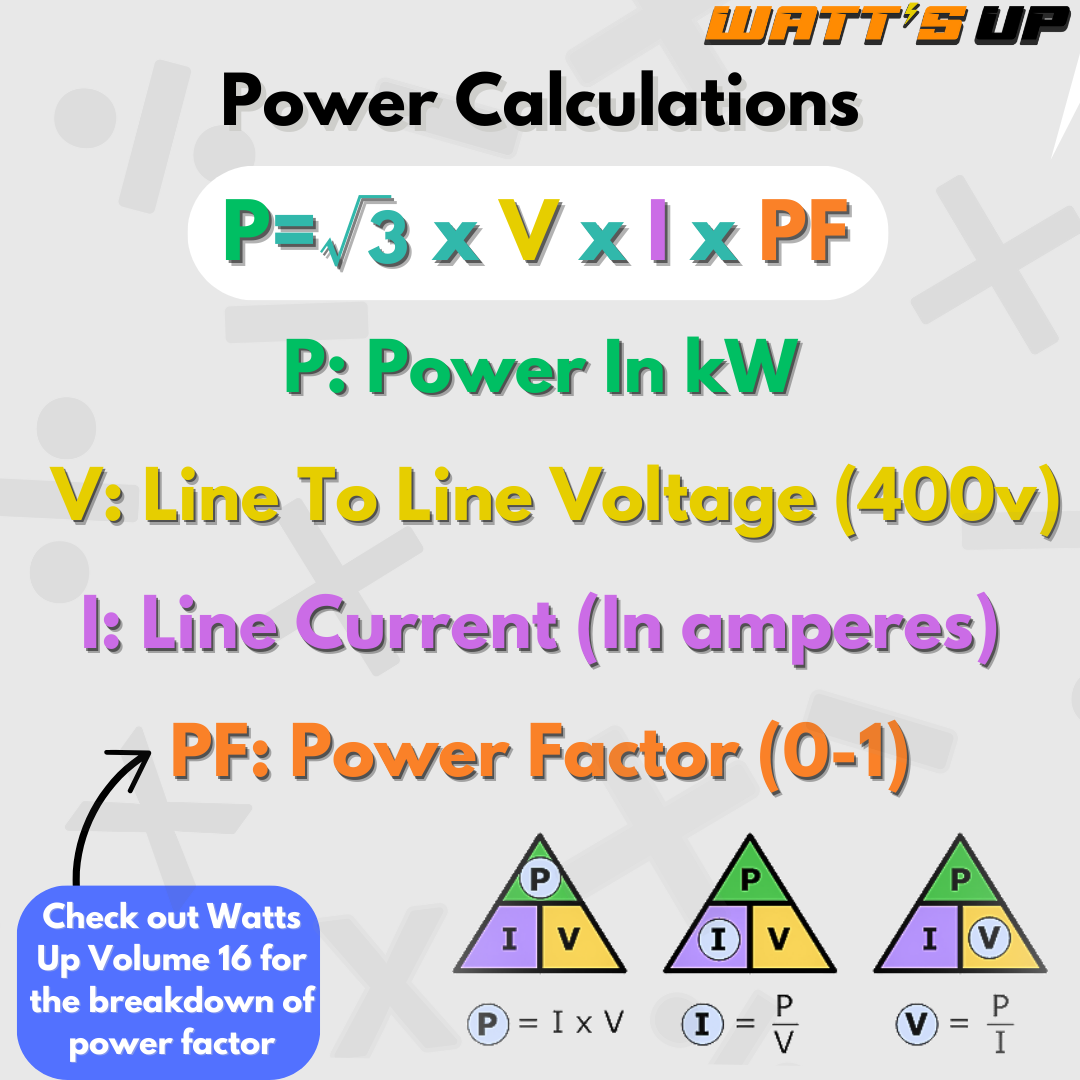
Component Breakdown
Incoming Supply And Main Switch:
Three line Cables: L1, L2, L3, a neutral cable, and an earth cable.
Busbars:
Metal strips that distribute each phase (L1, L2, L3) to outgoing circuits.
Circuit Breakers (MCB):
Individual circuit protection includes single-Pole Breakers, that are ideal for single-phase loads connected to one phase and neutral. Alternatively three-pole breakers, for three-phase loads.
Neutral and Earth Bar/Terminals:
Ensures proper return paths and safety.
SPD:
Protect the electrical systems and equipment from transient overvoltages caused by lightning strikes, switching operations, or other sudden voltage spikes.
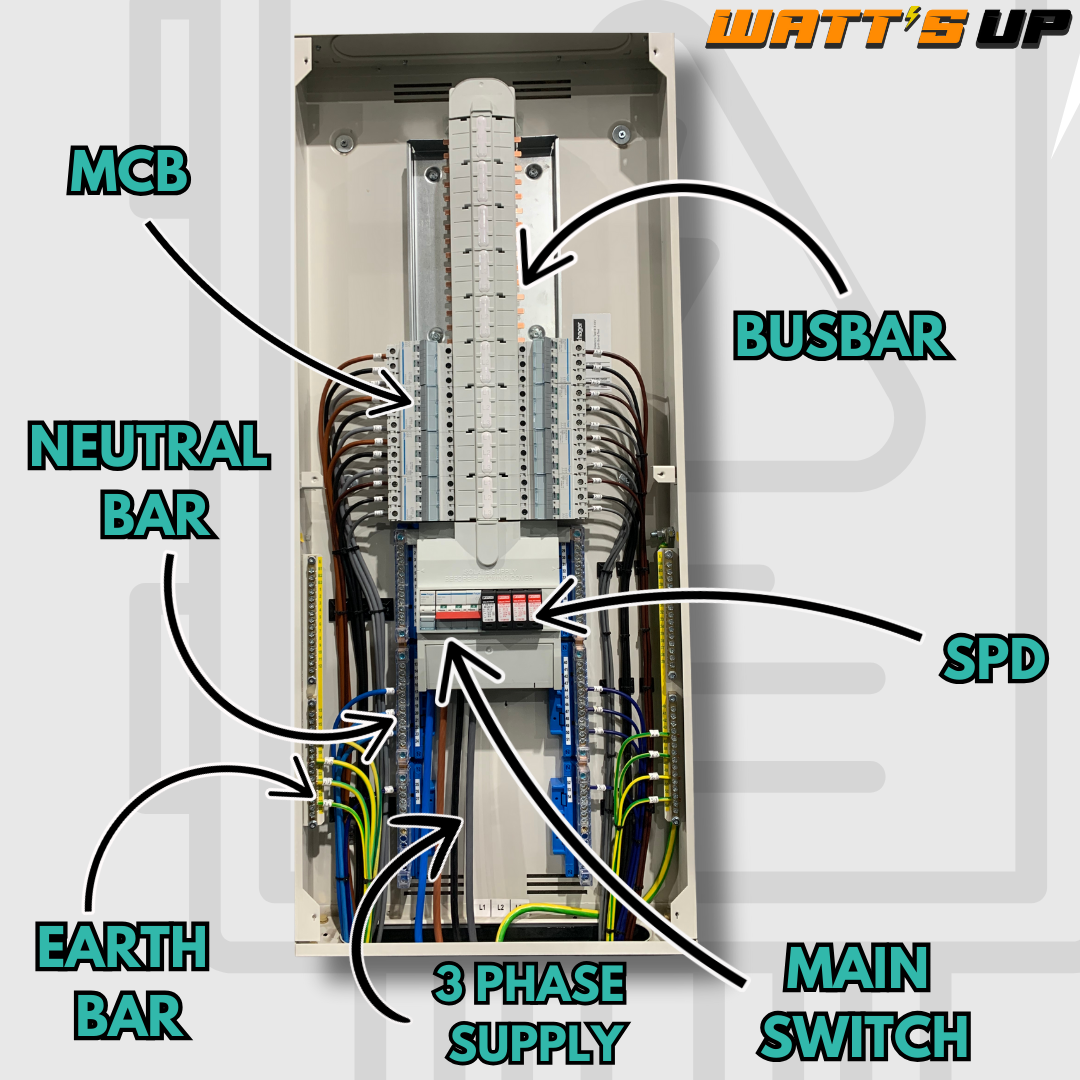
Key Differences Between a Single-Phase DB & A 3-Phase DB
Power Handling:
- A single-phase DB is limited to 230V and is ideal for smaller loads.
- A three-phase DB manages 400V and supports high-demand equipment.
Load Balancing:
- In a single-phase DB, load balancing is not a concern as there is only one phase.
- In a three-phase DB, loads must be balanced across the three phases to avoid overloading one phase and causing inefficiencies.
Flexibility:
- Three-phase DBs offer the flexibility to power both single-phase devices (connected to one-phase and neutral) and three-phase equipment.
- Single-phase DB's are limited to single-phase circuits only.
When to Use a Three Phase DB
If a house operates a large quantity of high energy-consuming appliances, for example, hot tub, air conditioning and large entertainment systems then 3- phase system is more suitable.
Although It's more typically found in an industrial or commercial setting that powers machinery and high-demand equipment daily.

The Office for Product Safety and Standards has issued a product safety report concerning MK Electric's MK Essentials Electrical Three Pin Sockets with Switches, identifying a high risk of fire associated with these products.
The hazard that has been identified is that the sockets may produce an arc flash when the switch is operated or under load, posing a significant fire hazard.

A comprehensive list of affected models and their corresponding barcodes is available in the official product safety report located HERE.
The product has now been withdrawn from the market. If you have installed any of the products identified recently, it would be common sense to remove them as soon as possible and make as many electricians aware of the danger.


Struggling to get a handle on energy efficiency? 😥
Wondering what the energy consumption is? 🤔
The PEL104 logger gets straight to the point in figuring out real-world energy levels.
Need to monitor energy usage in a factory, office, or even across a district? The PEL 104 simplifies the process, providing detailed insights to optimize energy efficiency. Its magnetic mounting ensures effortless installation in tight electrical cabinets, while real-time monitoring and data analysis help pinpoint waste and track savings after improvements.
The PEL104's versatile communication modes, including Bluetooth, WIFI, and 3G/GPRS, let you access and manage data remotely, so you can keep tabs on everything without needing to be on-site.😮
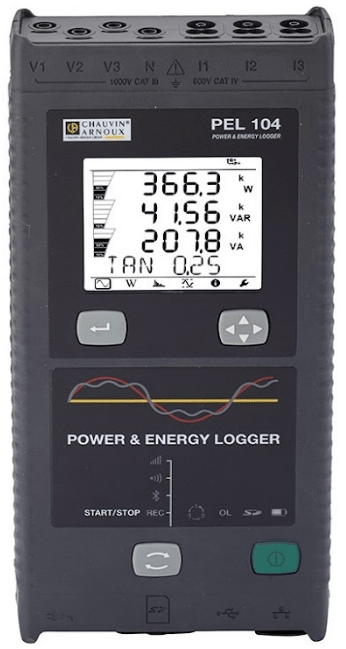 Check it out!
Check it out!

As energy consumption is a hot topic this time of year what better way to deep dive into the topic with a quick breakdown of the basics of calculating energy costs?
There are three main factors to consider:
Energy Usage: Energy consumption in kilowatt-hours (kWh)
Tariff Rate: Cost per kWh from the energy provider
Standing Charge: A consistent fixed rate
Energy Cost Per Day
An average house in the UK uses 12,000w Per Day
Converted is 12,000w = 12kW
Working at a 24.5p Per kWh
Energy Cost= Total kWh Used x Cost per kWh
Energy Cost = 12kWh x £0.245 = £2.94 Cost Per Day
£2.94 x 30 = £88.20 Cost Per Month
Standing Charges
Standing Charge Per Day x Days in Month = Monthly Standing Charge
£0.61 x 30 = £18.30 Per Month
Energy Cost + Standing Charge = Total Cost Per Month
£88.20 + £18.30 = £106.50 Total Cost per Month
Lets see if you can work out the answer to the following, the first person to email us with the correct answer will get a shout-out in the next volume.
What is the cost of running a 4500W Hot Tub for 2 weeks, 6 hours a day with the cost being £0.55 per kWh and a daily standing charge of £0.55?

- AC - Alternating Current
- LED - Light Emitting Diode
- IP - Ingress Protection
- VFD - Variable Frequency Drive
- CTVT - Current Transformers & Voltage Transformers

If you are interested in becoming a sponsor of the newsletter or want to be featured like Mark above please don't hesitate to reach out. Link to contact us below
Contact us here!The material and information contained in this newsletter is for informational purpose only, you should not rely upon the material or information on this newsletter, all readers must make their own judgment and seek professional advice when making decisions based on the context of the newsletter